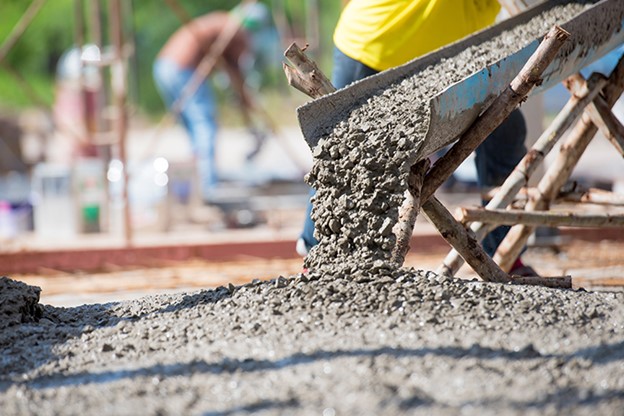The Growing Green Construction Industry is Building a Sustainable Environment for Future

14 Aug
2023
The green construction market is growing at a fast pace as global attention to sustainability has increased. Also, green construction is in high demand as people around the world are becoming more aware of the consequences of climate change, resource depletion, and other environmental issues. In addition, the increase in demand for green buildings, the rise in infrastructure projects, and an increase in industrial and commercial spending are expected to drive market growth.
According to a recent study by Allied Market Research, the green construction market is projected to exhibit a remarkable compound annual growth rate (CAGR) during the forecast timeframe.
What Is a Green Construction? How Is It Different from Normal Construction?
Green construction refers to the use of eco-friendly methods and technologies throughout the life of a building, from design and construction to operation and maintenance, and even refurbishment. Sustainability involves working closely with engineers, contractors, architects, and clients throughout the construction process. Green construction balances the traditional building design principles that emphasize cost-efficiency, durability, benefits, and comfort. The three aspects of sustainability are the planet, people, and profit across the entire supply chain.
What are the differences between green construction?
The difference between green and regular constructions is best explained by the criteria on which green certificates are issued. They cover things like how energy efficient the construction is compared to other regular constructions, what materials and resources are used, the quality of the indoor environment, health and comfort, how sustainable the site is, and how much sustainable facility management is in place.
Signature Global, a top leading real estate developer of affordable housing projects, founder and chairman Pradeep Agarwal says green buildings can save up to 32% more energy, 52% more embodied energy, and 53% less embodied materials. Green buildings are made with harmless material, and the design is designed to low power consumption without sacrificing people's comfort. These buildings provide better air circulation, enhanced natural light exposure, and reduced indoor air pollution. Furthermore, a green building may not be visually distinct from a traditional building.
In addition, the role of government policies and regulations in the development of the green construction market is essential. It is so important to have supportive policies, like green building codes and tax incentives, as well as sustainability objectives, driving the transformation of the industry. Governments can provide a framework and financial incentives to promote the uptake of green construction practices. Furthermore, advanced technologies are contributing to the advancement of sustainable construction, including the expansion of zero carbon emission buildings, the incorporation of smart technologies, and the usage of eco-friendly and biopolymer materials, as well as the implementation of designs that are inspired by nature in terms of the ecosystem.
Hence, green construction practices will enable us to reduce the impact of construction on the environment, build more energy-efficient and eco-friendly buildings, and contribute to a brighter future for generations to come. Let's make green construction an essential part of our lives!

Rosy Behera
Author's Bio- Rosy Behera holds a bachelor’s degree in Electrical and Electronics Engineering and now she is a content writer by profession. She loves to portray her thoughts and ideas with a nice command of words. Grabbing an audience with her creative write-ups is one of her biggest assets so far. Apart from writing, she is a certified “Odisi” dancer and has done Gardharva in Drawing, Painting, and Arts. She always explores new things through travel and is a big foodie.
Upsurge in Fire Safety with Advanced Damper Actuators for Fire and Smoke Protection in Buildings
Avenue: Entire Library membership of Allied Market Research Reports at your disposal
- Avenue is an innovative subscription-based online report database.
- Avail an online access to the entire library of syndicated reports on more than 2,000 niche industries and company profiles on more than 12,000 firms across 11 domains.
- A cost-effective model tailored for entrepreneurs, investors, and students & researchers at universities.
- Request customizations, suggest new reports, and avail analyst support as per your requirements.
- Get an access to the library of reports at any time from any device and anywhere.
Related Post
-
How are Submarine Cables Transforming Global Connectivity with Enhanced User Experience?
-
Endoscopy Procedures: Transformations in Techniques and Applications
-
AI-Powered Video Analytics: How the Product Actually Works for enterprises
-
Painting Robots: Transforming Precision Coating and Creative Applications
-
Innovations in Pharmacovigilance Systems Advancing Patient Safety
-
Understanding Edge Security: Keeping Data Safe Near the Source
-
Exploring the Use and Advancements of 3D Laser Scanners in Professional Applications
-
Reinforcing Industrial Controls with Smarter Tools and Training








